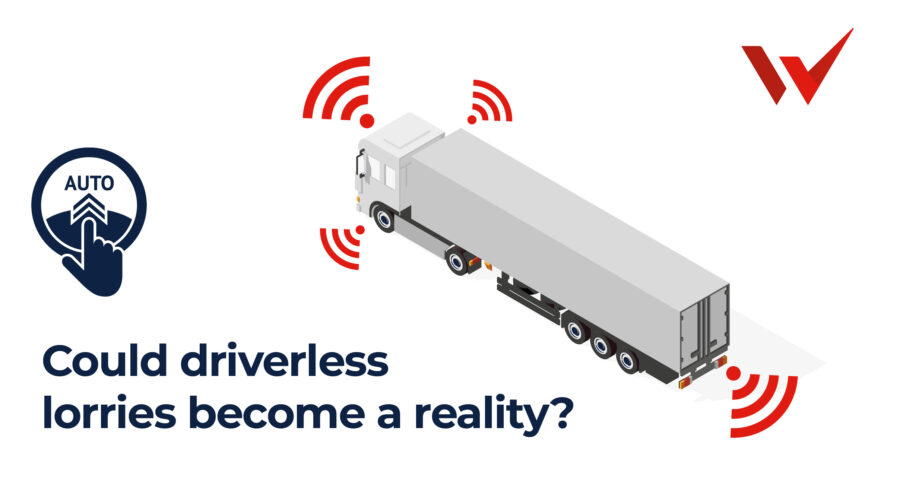
Could driverless lorries become a reality?
Almost daily, there are reports in the paper about the prospect of driverless lorries hitting UK roads. But how realistic is this?
On one hand, the invention of driverless lorries could be a total game-changer for hauliers worldwide – you could save significant labour costs and improve drivers’ quality of life while maintaining 24/7 transportation. But on the other, the prospect of driverless lorries could be a considerable safety risk.
At the moment, we still do not know what to expect from driverless lorries and whether they could become a mainstay of UK roads. However, we know the government is investing significant funds into driverless projects.
Earlier this year, the government awarded £42m to seven different projects designed to test driverless technology’s prospects. Each scheme (which was match funded by the industry) will need to show they are commercially viable by 2025.
The hope is these new projects will use sensor technology, cameras, and artificial intelligence to manage portions of a journey without needing a driver. If the projects are viable, the technology could help hauliers cope with driver shortages while circumventing the current legislation that dictates when and where drivers should take their breaks.
Theoretically, driverless technology should also lead to less wear and tear on tyres and brakes and reduce emissions.
Which driverless projects are currently underway?
The headline-grabbing projects which have been funded by the government include:
- The North East Automotive Alliance V-Cal project has received £8m to trial the use of automated, zero-emission HGVs carrying car parts on private land and public roads. During the tests, the vehicles must learn how to manage traffic lights, roundabouts, security gates, bridges and other road users.
- A £6m project involving Stagecoach North East and Newcastle University, among others, will test an automated, remotely supervised passenger service. This will travel between Sunderland’s transport interchange, the University of Sunderland City Campus, and Sunderland Royal Hospital.
- In Edinburgh, Stagecoach is also working with bus builder Alexander Dennis to launch a full-sized, self-driving bus service north of the border. With £10.4m in funding, the government believes this could be a word-first.
- Glasgow-based Hydrogen Vehicle Systems (HVS) and self-driving technology firm Fusion Processing received £6.6m in funding to develop a self-driving, hydrogen-powered heavy goods vehicle for Asda to trial.
According to the then Business Secretary Grant Shapps, these projects could revolutionise the way we work.
He says:
“In just a few years, the business of self-driving vehicles could add tens of billions to our economy and create tens of thousands of jobs across the UK. This is a massive opportunity to drive forward our priority to grow the economy, which we are determined to seize.
The support we are providing today will help our transport and technology pioneers steal a march on the global competition by turning their bright ideas into market-ready products sooner than anyone else.”
Grant Shapps, (then) Business Secretary, speaking in February 2023
What do we think about driverless tech?
As haulage experts, we’re excited to see how these projects could transform the sector. There’s much to be excited about. After all, the fears we may have now about driverless lorries could be the same fears people had when Henry Ford invented the motor car back in 1896.
Driverless tech brings enormous advantages for businesses – and if we’re serious about growing the UK economy, we have to take risks to allow innovation.
For example, with driverless lorries, businesses can
- Save significant money on driver labour costs, which can be passed down through the wider supply chain
- Cope with driver shortages, especially during seasonal fluctuations and last-minute delivery timescales
- Benefit from better fuel economies and lower maintenance bills as the driverless tech would ensure vehicles are driven in optimum conditions
- Allow drivers to benefit from better work-life balance, relieving their pressures
- Benefit from 24/7 transportation with no need for scheduled breaks
But there are also downsides which we hope these projects will research and address.
- Some technologies are about using sensors to create convoys of vehicles. There are concerns a number of junctions on UK roads are too small to successfully cope with a convoy of lorries, especially considering how many other road users will need to exit at different junctions, potentially impacting the convoy.
- Driverless tech is only suitable for major roads and highways, allowing consistent movement. Therefore, how will they react to changing driving conditions, such as traffic gridlock or unexpected issues?
Driverless tech doesn’t mean the end of driving as we know it…
One thing we do know is driverless tech doesn’t mean drivers will not be on board those vehicles. In fact, many of these projects will need a driver ready to cope with smaller roads and the pickup/delivery stage of any shipment.
The UK public is unlikely to accept fully driver-less lorries because of safety fears, so it’s important to reiterate to those working in driving job roles that any innovation doesn’t mean a job loss. Instead, it could be a benefit to work-life balance and a way to reduce pressures on drivers.
The clock is ticking.
Although the government-funded projects were underway at the start of this year, they are all under immense pressure to deliver commercial viability by 2025. Scarily, that’s not long to wait, so perhaps driverless technology could be here before we know it!
We’ll certainly keep an eye on any developments and wait to see how this innovation could transform the haulage and freight-forwarding sectors.
